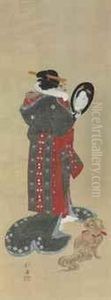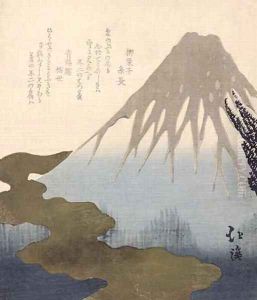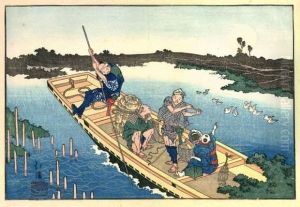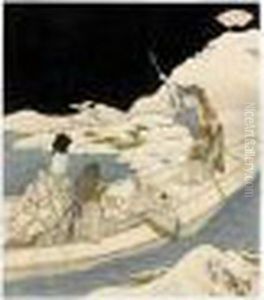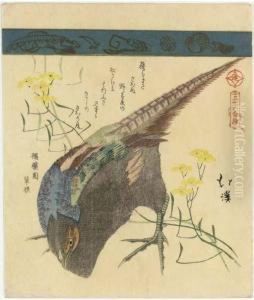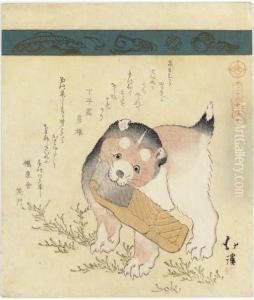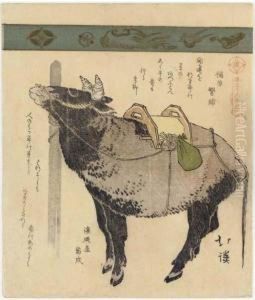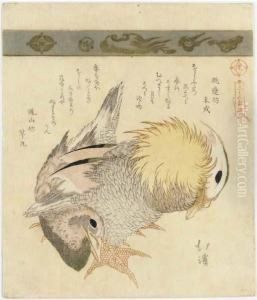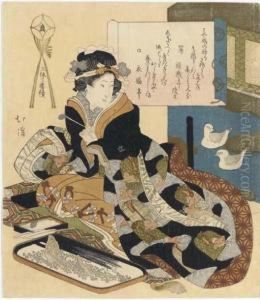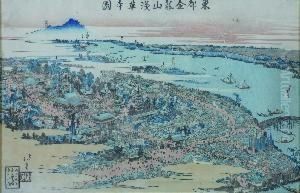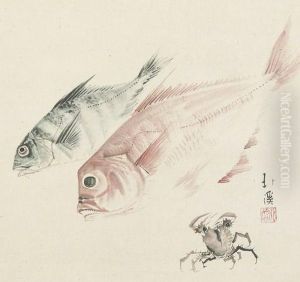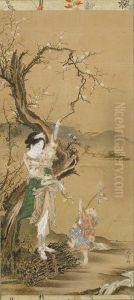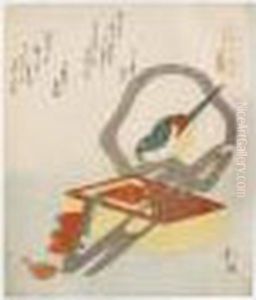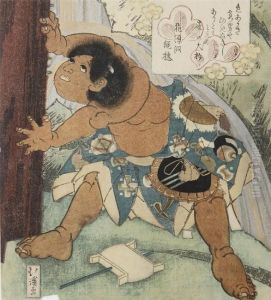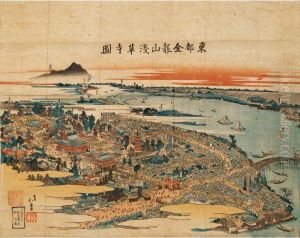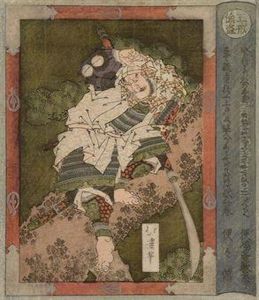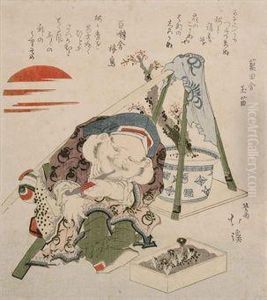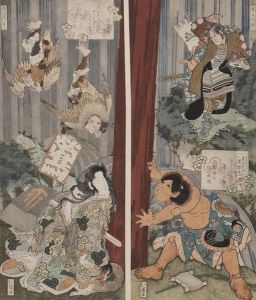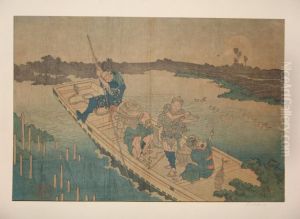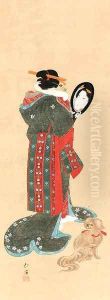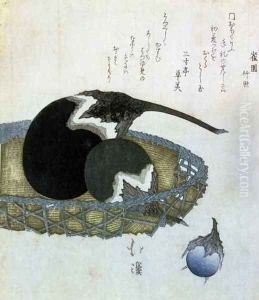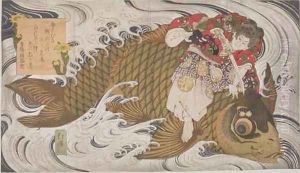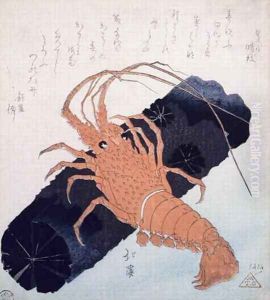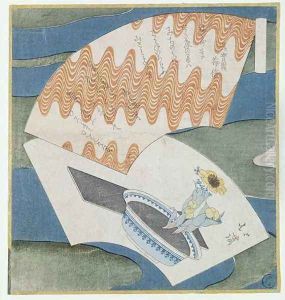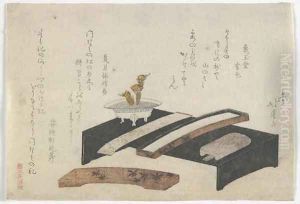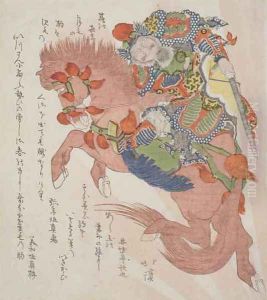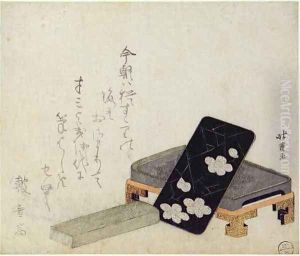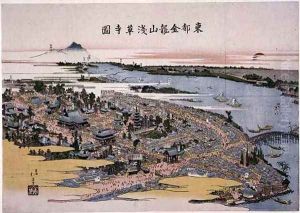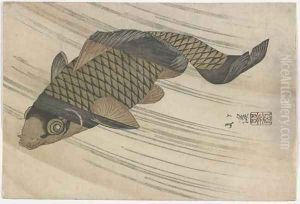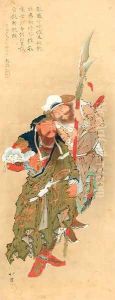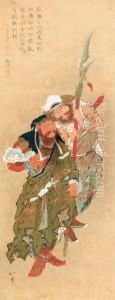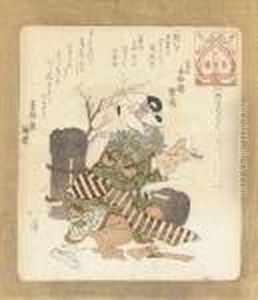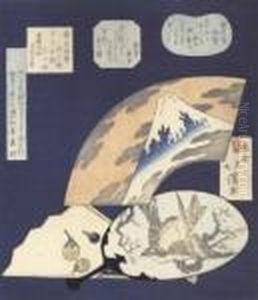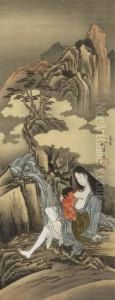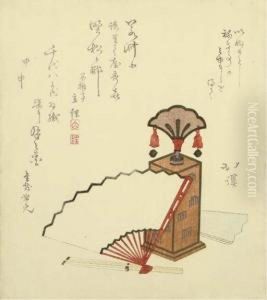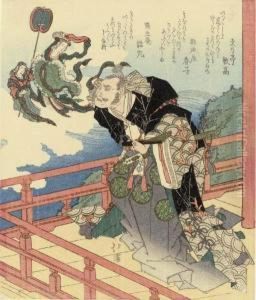Toyota Hokkei Paintings
Toyota Hokkei was a Japanese artist, best known for his work in the ukiyo-e genre of woodblock prints and paintings. Born in 1780 in Edo (present-day Tokyo), Hokkei initially trained under a sign painter before becoming a pupil of the great ukiyo-e master Katsushika Hokusai. He was among the most talented and successful of Hokusai's students and was active during the late Edo period, a time when ukiyo-e art was immensely popular.
Hokkei's career was marked by his versatility and innovation. He worked in a variety of genres, including bijinga (pictures of beautiful women), landscapes, and surimono (privately commissioned prints). Surimono often featured poems and were more exclusive compared to the commercial prints sold in shops, allowing for a greater expression of the artist's skill with more lavish designs and the use of expensive pigments. These works particularly helped to establish Hokkei's reputation.
Despite his skill and success, Hokkei's life was not free of financial struggle, which was not uncommon for artists of the period. He took on various jobs to supplement his income, including designing covers for books and illustrating kyōka (humorous poems). His work is characterized by a clear and delicate touch, with a refined use of color and a strong compositional sense. After his death in 1850, Hokkei left behind a body of work that has been celebrated for its beauty and craftsmanship, and which continues to be admired by collectors and scholars of Japanese art.
